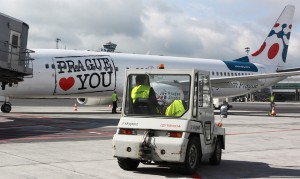System TE-VOGS
System TE-VOGS is a solution increasing the safety of ground traffic or movement operations in predefined areas, such as airports, based on the collection of transport data from individual mobile units. The system uses a central processing of information about positions and their comprehensive transfer back. The visualization of this comprehensive information in graphic form offers a mobile unit driver an overview of not only his own movement, but also of the traffic in his surroundings.
System TE-VOGS was developed especially to support airports’ mobile environment, but it may be deployed at all places where a larger number of mobile objects operate in a defined territory. E.g. in seaports, extensive industrial and storage premises and military areas.
The system offers:
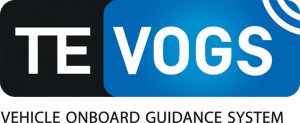
- Support safety and traffic/movement control of mobile units in
pre-defined areas. - Assistance in emergency situations.
- In low visibility an improved situation awareness of vehicles’
drivers via onboard system. - Support maintenance, safety and rescue processes.
- It can help optimize the aircraft turnaround time, i.e. the time
between itslanding and the next take-off.
PURPOSE OF THE SYSTEM:
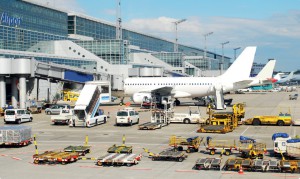 System TE-VOGS is a solution designed to determine the position and supervise the mobile units with the primary objective to increase operational safety, movement control, improve efficiency of the mobile units’ movement and support other applications. The system allows supervision over several tens, even hundreds of mobile units in an area covering up to tens of square kilometers. System TE-VOGS may be interconnected with other local information and safety systems. This option allows the inclusion into the system of those mobile objects that intend to enter the given area, and to ensure the priority of their movement in advance. The main advantage of the system is the capability to provide an overview of all the mobile units’ movements in a given area not only to the movement supervisor, but the same information is available to each driver in each vehicle. By means of specific algorithm it is therefore possible to predict congestion or
System TE-VOGS is a solution designed to determine the position and supervise the mobile units with the primary objective to increase operational safety, movement control, improve efficiency of the mobile units’ movement and support other applications. The system allows supervision over several tens, even hundreds of mobile units in an area covering up to tens of square kilometers. System TE-VOGS may be interconnected with other local information and safety systems. This option allows the inclusion into the system of those mobile objects that intend to enter the given area, and to ensure the priority of their movement in advance. The main advantage of the system is the capability to provide an overview of all the mobile units’ movements in a given area not only to the movement supervisor, but the same information is available to each driver in each vehicle. By means of specific algorithm it is therefore possible to predict congestion or
collisions situations.
MAIN FEATURES:
- Positional data in real time. Positional information is generated and processed in a way to ensure system’s anticollision capabilities without any degradation.
- Solution of non-standard situations by means of preprogrammed procedures.
- Comprehensive movementtraffic information in each vehicle.
- Resistance against adverse impacts upon signal reception.
- Functionality of the system even under severe weather conditions, in low visibility during heavy snowfall, rain or dense mist.
- The system is resistant to signal reflections and receives signals also under conditions of loss of the Line-of-Sight (LOS) signal reception and clutter, i.e. in situations typical for reception at places with high obstacle density and with a large concentration of mobile units in a small area.
- System flexibility and wide usability.
- An option to quickly define off-limits zones by the movement supervisor using the system. For instance, in case of an extraordinary event – emergency (like an accident, a fire,…) the movement supervisor marks the required zone and navigates the rescue team(s) towards the event location. For other mobile units the zone would remain off-limits (closed).
- The recorded data about positions and times of the mobile units’ movements allow subsequent analysis, assessment and optimization. Data logging and exploitation.
- Wireless network TE-VOGS NET may also be exploited by other applications requiring high-speed wireless and safe data transmission.
Open system:
- The system is ready for integration to other information and safety systems (e.g. airport systems A-SMGCS, ALCMS).
- The system is ready for customization of the SW application according to the user’s requirements.
- The system is ready (airport deployment) for future support of additional applications, the standardization of which is currently being finalized within ICAO and Eurocontrol.
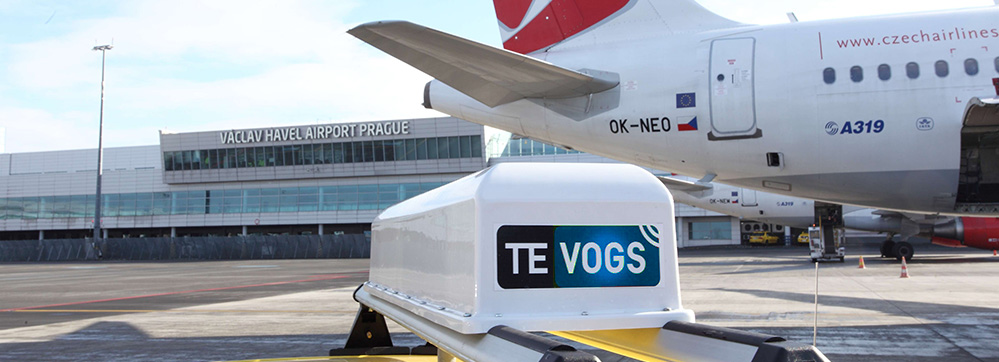
project Václav Havel Airport Prague
(Situation: operational area – airport, mixed movement of airplanes and airport vehicles)
BASIC COMPONENTS OF THE SYSTEM:
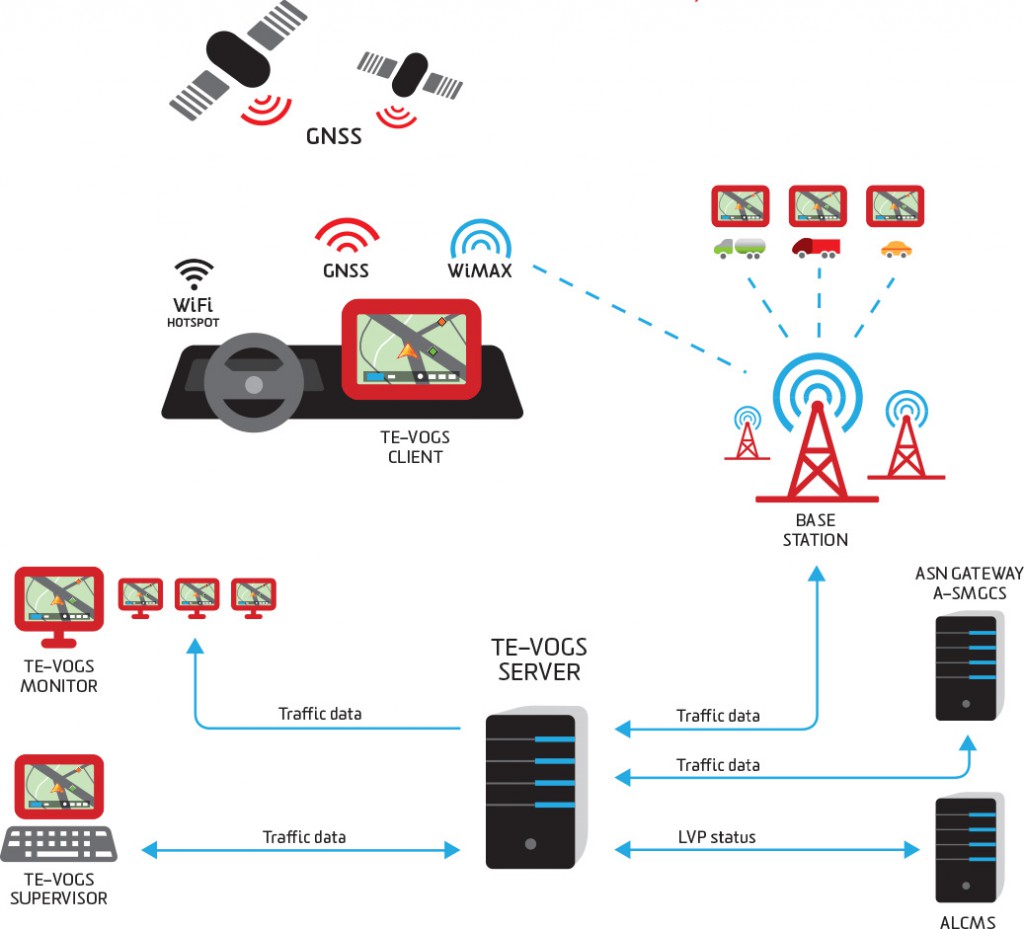
- Mobile client unit TE-VOGS CLIENT
- Movement supervisor station TE-VOGS SUPERVISOR
- Monitoring station TE-VOGS MONITOR
- Signal TE-VOGS SIGNAL
- Wireless data network TE-VOGS NET
- Processing unit TE-VOGS SERVER
- Mobile client unit TE-VOGS CLIENT
Navigation, information and communication unit of the TE-VOGS system. The unit consists of a tablet with client software located in the docking station in the driver’s cabin and of the roof extension with a communication facilities for the wireless network and GNSS receiver.
Main features of TE-VOGS CLIENT
Robustness, reliability, wireless connection, wide usability.
Some of basic functions of TE-VOGS CLIENT
- Display of its own position and position of other TE-VOGS clients in real time.
- Display of positions of airplanes and mobile units from the A-SMGCS system.
- RWY(TXWY) Proximity Alerts (alert on entrance to the defined zone around the RWY(TXWY).
- Area Alerts (alert on entrance to the zones defined by the movement supervisor).
- Information about the LVP condition alert.
- Function Crossing (support for safety of mobile units in places where the service communications cross the airplane taxiways on the service aprons).
- Points of interest – option to enter the POIs’ coordinates, to hand the coordinates over to the movement supervisor.
- Messaging function.
- WiFi Hotspot – option to connect to the TE-VOGS NET network even from outside of the vehicle.
Rugged tablet
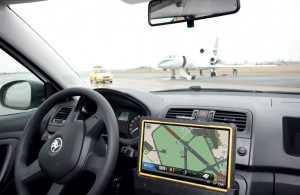
- Designed for use in vehicles, mechanically durable, wide range of operational temperatures.
- Tablet may be used in the vehicle’s docking station or separately outside the vehicle.
- Touch screen with high brightness, clearly readable even in direct sunlight. Day and night modes, automatic brightness adjustment, panning, zooming.
- Tablet optional accessories: 3G connection, 1D/2D Imager, barcode reader, HF RFID reader and other interfaces.
TE-VOGS CLIENT supports 2 operating modes
Mobile use:
Tablet is inserted in the vehicle’s docking station. TE-VOGS CLIENT is connected to the TE-VOGS NET network.
Portable use outside the vehicle:
Part of the TE-VOGS CLIENT technology, which is permanently installed in the vehicle, operates as a WiFi HotSpot. Thus, the tablet may be operated as a part of the TE-VOGS CLIENT at the distance of several tens of meters around the vehicle; and owing to the local WiFi network it does not lose connectivity to the TE-VOGS NET network.
GNSS:
Support for satellite navigation systems: GPS, Galileo (alternatively Glonass), including their SBAS support systems (such as EGNOS). Movement supervisor station TE-VOGS SUPERVISOR
Supervision, control and monitoring of the system.
Some of basic functions of TE-VOGS SUPERVISOR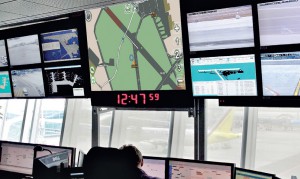
- Monitoring display with airport map and showing positions of all monitored vehicles and airplanes.
- Quickly define off-limits zones by the movement.
- Navigates e.g. the rescue and security team(s) towards the event location.
- The application allows multiple windows operation.
- Setting of the function Crossing linked to the ALCMS system and TE-VOGS SIGNAL.
- Set of tools for creation and working with Special Mode Zones.
- Set of tools for working with Points of Interest.
- Messaging function.
Optional functions – according to the user’s requirements
- Car fleet administration.
- Set of tools for administration of audits and inspections.
- Set of tools for the data recording and exploiting, statistic functions.
Monitoring station TE-VOGS MONITOR
Monitoring station with limited rights.
- Same functions as the movement supervisor station, but with limited authorization to access information and to monitoring options based on specific users groups.
- Monitoring display with airport map, showing positions of monitored vehicles and airplanes.
- Available as an application via web browser.
- The application allows multiple windows operation.
- Designed for specific groups of special technology operators (rescue and security teams, fuel services, service teams,…) to improve awareness about up-to-date operating condition of the mobile technology.
Signal TE-VOGS SIGNAL
Increased movement safety for all participants.
Output for external information monitoring and display unit with movement information or signal lights located at crossings. Provides up-to-date movement information to increase safety of movement of vehicles in such places, which are not equipped with the TE-VOGS system. Parameters of the function Crossing would be set by the traffic supervisor.
Wireless data network TE-VOGS NET
Broadband, robust, reliable wireless network.
- Resistant against weather, multipath signal propagation, NLOS reception capability.
- Only small number of base stations needed for coverage of large areas and great distances.
- The network is designed for mobile reception.
- Safe and secure data transmission, authentication.
- MIMO technology implementation.
TE-VOGS SERVER
System control software, fully customable.
KEY FEATURES OF TE-VOGS SYSTEM
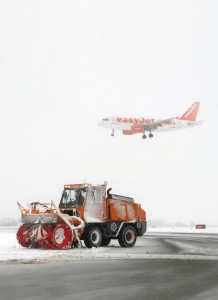
- TE-VOGS can optimize a/c turnaround time (time between aircraft landing and its next take-off).
- Reliable and accurate information about position of a vehicle in real time.
- Reliable and accurate information about position of mobile units around.
- Reliable and accurate information in real time, both for the mobile unit crew and for the traffic supervisor about overall situation in defined area.
- Fast handover of information about problems in the area by means of pre-defined pushbuttons in the vehicle (e.g. traffic obstacle, road damage, etc.).
- Reliable orientation even under low visibility conditions.
- Prediction of possible collision situations.
- Option to define off-limits zones.
- Support for solving of emergency situations.
- Navigation of rescue and security teams towards the point of action.
- Function Crossing for safe RWY(TXWY) crossings.
- Robust broadband wireless data network.
- Minimum number of base stations for the TE-VOGS NET (in case of Prague airport, only 4 base stations are required, including redundancy).
- Mobile or portable operating modes of the client unit.
- Applications and sets of tools for wide range of uses on client request.
- The system is open to work together with other systems.
- Fully compatible with SESAR plans.
“TE-VOGS has the ambition to become one of the pillars of operating safety of vehicles on airports. This system offers new functions and capabilities, may contribute to more efficient exploitation of mobile units as well as to expediting and facilitating the work of airport operating personnel. TE-VOGS is a system solution, which in compliance with the SESAR plans and projects will mean a significant support of traffic safety at airports.”

